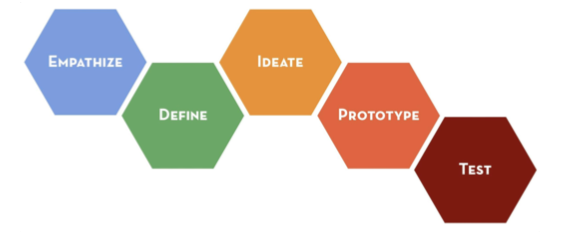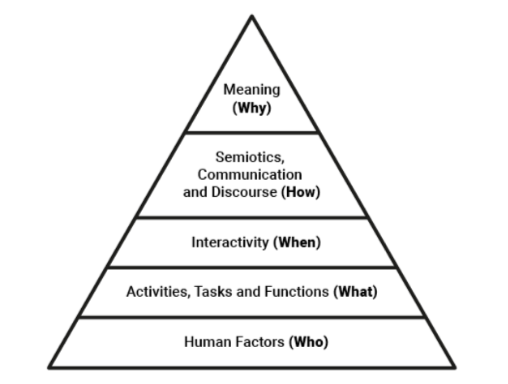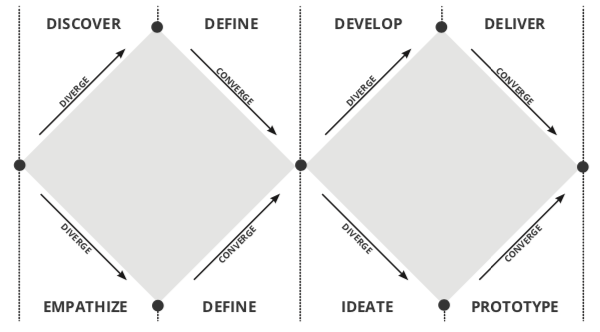|

Octavian Graf Pilati comes from a family (Khevenhuller) whose history dates back to before the year 1000. He studied mechanical engineering at the TU Vienna. In the years 2015-2018 he managed the crisis in the family business stemming from a failed investment. Coming from an engineering background, I principally use the Design Thinking Process when solving problems. Thus, when I had the privilege of managing a major crisis in our family business (forestry), I went about the management of the crisis in this manner. After much reflection, I have noticed that the way designers and product developers think is not used a lot in management. However, Design Thinking has become more of a topic in the last few years. So, how does one apply each of these steps in a crisis? First, let’s look at how a crisis is defined by looking into the Cambridge Dictionary and at the Business English definition:
This is of course a very broad definition. Drawing from my own experiences, let me add a few key things to be aware of in a crisis:
Now, what is Design Thinking? There are many different definitions and many different processes out there. Essentially, Design Thinking describes nothing more than the thought process a designer goes through when he is trying to design a product. From a management perspective, we can view a crisis as a problem that needs solving. One of the most widely used processes is the Stanford Design Thinking Model, which splits the process into 5 steps: 1. Empathize: To gain an emphatic understanding of the problem you are trying to solve. 2. Define: To analyse the previously gathered observations and synthesise them in order to define the core problems that needs to be solved. Typically, a design specification is created. 3. Ideate: By looking at the defined problem from different angles and reframing the problem several times, the aim is to create many different solutions. 4. Prototype: The aim of prototyping is to create inexpensive and scaled down versions of the generated ideas, which seem to have the most potential. 5. Test: The prototypes are tested against the specification and with the users, to evaluate how well they solve the problem. 
Note: The Design Thinking Process is an iterative and non-linear process, meaning that at any stage you may go back to the beginning or just a stage earlier. Each step will increase your understanding of the problem and may send you back to the drawing board. This is an important fact. THINK – MAKE – BREAK – REPEAT Given the points from above we will now apply the Design Thinking Process to a crisis. For better clarity we will introduce a generic crisis as example which is purely illustrative and kept very simple. 
A company founder with 75 years of age is still the CEO while his son, 35, is head of sales. The mother has previously retired from her law firm and now indulges in philanthropy. The company is in financial troubles as performance has been dropping. The company sells machinery in the foods industry.
More often then not it is a combination of several problems (as the definition of a crisis suggests). Given the complexity of a crisis this step takes time and short cuts should not be taken. From a management perspective it is vital to stabilise the situation first and to work to gain time. Everything in life is full of paradoxes and one of the biggest paradoxes in a crisis is the need for speed, while not having much room for error. A personal tip from my side, when you are pressured to act fast by others: If the navy seals take their time in a combat situation to think before they act, so can you. Below you see the “Human-centred design pyramid”. This is a short overview of how to go about emphasising and which questions you want to?ask yourself. Asking why, how, when, what or who will help you identify all the factors involved in the problem. 
To keep things simple again we will now only Emphasise with the 3 family members. The CEO has built up the business from scratch being an engineer by training and identifies himself with the business – he is the business. The son has studied economics to take over the business from his father. Straight after university he went into the family business, having to work his way up till he got the position of Sales Manager. The mother has stood by the father’s side for 45 years now and has gone through thick and thin with her husband. In a real setting you are either the family office manager, who takes care of the financial aspects, or you come in to manage the crisis. Either way, you would start with interviewing the family members. Here you try to apply emphatic listening (on a more detailed explanation I can suggest the book “7 Habits of highly effective people” by Stephen Covey). The outcome is that the father has no plans to hand over the CEO before he dies and doesn’t really see the urgency in the crisis, ups and downs are normal in the business. The son never wanted to study economics, he felt it was expected of him and would rather start something of his own. The wife feels that it is time to transition into a next phase in live, she is somewhat fed up of her husband going to the office six to seven days a week. She spends most her time in philanthropy and wants to enjoy the rest of her life. Looking at the business you see that costs have gone up, sales have slumped and in comparison to competitors processes and machinery are outdated. Analysing stakeholders and employees has brought no concerning insights. Define Now, after gathering up all the information you can in the Empathise stage, it is time to use this information to define the problem. From personal experience in a crisis, the problem is often wrongly defined to begin with. Most people will focus at the obvious problem at hand. For example, that the business is running low on liquidity and is heading for bankruptcy. Of course, it is important to avoid going into bankruptcy and to sort out the liquidity problem, but in order to solve the crisis one needs to look deeper. I call this the “complete the puzzle” stage. Any piece of information is a puzzle piece that will help you build the whole picture (caveat: be careful as sometimes you can have more than one picture). To put some examples out there that could be the deeper reasons for a crisis:
In the Define phase it is also quite important to be certain about at what level the problems lie. In a family context, I believe firmly that a crisis will mostly come down to dysfunction in the family. This is the deepest level you can go. Dysfunction can mean anything from the patriarch staying in the position of CEO for too long, next generation taking over, but not having been prepared for it, fighting between family members, etc. For more on this topic I suggest reading about behavioural risk, which has been written about in the Horizons issue number 4. Looking beyond the emotional expressions of family members in a crisis, the actual reasons for the crisis could be a level above, for example fraud, incompetence of employees or wrong decisions in the past. In product development or design, the product specification would be completed after formulating a problem statement. A product specification is a list of requirements or smaller problems to solve. I highly suggest writing a crisis specification in which you collect all the problems and requirements. In a crisis these may be legal regulations, employee wellbeing, partner requirements, shareholder and family needs, financial goals etc. These specification points should be written pretty detailed; thus, they need to consist of a condition, a requirement, a subject, an object and an action. Remember, a crisis is full of paradoxes and this will reflect in your specification and it is perfectly fine to have points that are opposed to each other. In the end you will have to either choose a point over another, settle for a compromise or find a win-win solution that somehow satisfies both the points. So from your problem statement you will have specification points with specification sub-points. Often the specification points are also called key insights. The father is making bad decisions due to his age. The son doesn’t want to be in the business and is either performing badly on purpose or is just not in the right position. The wife is putting private pressure on both to get a move on, wanting the son to take over and the father to move out, or to just sell the company. Ideate The basis for Ideation is your problem statement and the specification points. Later you will assess your ideas against the specification. One of the most common terms known for Ideation is “brain storming”, thus we will assume that our readers have been exposed to some method of ideation in the past. To level the playing field: Brain storming does not equal to Ideation; many different methods can be used. Another thing up front: in the Ideation stage you will have many seemingly genius ideas right off the bat, but they won’t be the best. Take your time and go deep, talk to many people, some of the best ideas may come from the most unseeming people. It is also important that at the beginning of the Ideation phase you go for quantity and not quality, don’t get bogged down by details. In most cases the solution for your problem is a combination of several initial ideas and is put together through iteration and refined in the following stages. Most managers tend to be very analytical and want to evaluate ideas immediately. It is very important to keep this for the next stage. In the Ideation stage it is of utmost importance to not evaluate any ideas. It is scientifically proven that in a creative phase of Ideation, immediate negative feedback will inhibit the Ideation process. Positive feedback on the other hand can enhance the process, so it is perfectly fine to build upon each other’s ideas and to develop them. Some Ideation tools and methods I personally suggest are brainstorming and brainwriting, the seven thinking hats, brain dumping, worst possible idea, acting/story telling. 
After having gone through the Ideation process, some ideas for solving the crisis (or parts of it) may include:
Prototype At the start of the Prototype phase, the best ideas from the Ideation phase are chosen to be developed further. To choose the ideas, you turn to your previously defined specification and check the ideas against the points. It can be very helpful to weigh the specification points. I suggest giving them a score from 1-5 (5 being the highest). The amount of ideas you decide to make a Prototype for will depend on the quality of your ideas and the resources you have at your disposal. Once you have decided which ideas to develop further, you can now formulate them in more detail. Personally, I find the Prototype stage to be the most challenging in a crisis scenario. When developing a product, it is quite straight forward. You head to the drawing board make some rough designs and head to the workshop to produce your prototype. But how does this translate to a management scenario? Depending on your problem that you are solving and how deep it runs (remember the levels earlier), the Prototype can vary. It can be several rough restructuring plans (if its financial), new organisational charts (if it’s an HR issue), an strategic manifesto (if you need to readjust on a meta level), or a new structure of the holdings (if it’s a family issue, say the solution is to incorporate a trust). A Prototype may be as simple as an excel calculation, crunching some numbers. If it’s a legal issue you may need to look at several legal angles with your lawyer and have different strategic papers. There are a few unusual tools that I personally prefer to use in the Prototype stage, as they will set you up well for the Testing phase (remember time is mostly a scarce resource in crisis). Foremost, as a crisis is often a very complex situation and the solution is a combination of the above listed “plans”, it helps to use storytelling to write up your Prototype. Try to formulate your solution as a story in third person, where you write it from an eagle’s view. To graphically depict the story, a decision tree or decision table is very helpful. I personally like this combination as it is faster and easier to do than financial planning, etc. This way you can already go into Testing the idea before experts or employees have finished the number crunching or legal assessment. In my experience, the most crucial part in a crisis is negotiating. A lot is possible if you have the right mindset and a good plan. Tax authorities, banks, policy makers, etc., are most of the time not in favour of a crisis in your business unfolding, and thus rules become dynamic. And with a promising idea you can at least buy yourself time. In our case a Prototype would be the new company structures and rough legal requirements a short story that may be presented to the family and the stakeholders. Test In the Testing phase you actively try to break your solution. In this phase you can invite lawyers, policy makers, employees, stakeholders, etc., to challenge your Prototypes. Here you want people to be as critical and honest as possible. A crisis is not a time where you are concerned of people’s feelings. It’s time to act and find a solution, the same will apply for the managing team of the crisis. But keep in mind that feelings are an essential part of a crisis. Communication is key. Some methods and tools that I find helpful in the Testing phase are:
As mentioned earlier the Design Thinking process is an iterative process, following the principle of think – make – break – repeat. Don’t get disheartened if you “fail” at the Test phase several times. Every time you get here you are getting closer to a solution. In our crisis case I would suggest for Testing to play through the roles and looking at the family dynamics it may also be possible to include the mother in this part, as she will be able to eye up how her husband and son would react to the suggestions. Alternatively involving family friends or consultants who know the participants very well. Final Words Allow me to wrap up with some last words from my personal experience. When you are in a crisis don’t lose hope. Each crisis is a great opportunity and as the stoics say: “the obstacle is the way”. Crisis is very dynamic, so remain flexible in your actions and thinking, and do not be afraid to change your plans quickly and regularly. Ask for help, be open about the problem, get a crisis task force together, which will own the problem. People who got the company/ family into the crisis will not be adept at solving it, as often they don’t see the problem. Studies show that our brains cannot learn from mistakes immediately, it takes time, which in a crisis is a very scarce resource. The people solving the crisis need to be aligned and form a task force, so that they are also not bogged down by daily operations. I hope this article will be of help to you, when you are in need of solving a problem. If there are any questions about this, please do not hesitate to get in touch with me by emailing office@sub-umbra.com. Graf Pilati also offers the Opalesque SKILLSLAB COVID-19 Survival Training for Family Businesses webinar on April 15th, register here: https://www.opalesque.com/webinar/covid_survival/ | ||||
|
Horizons: Family Office & Investor Magazine
Octavian Graf Pilati: Applying Design Thinking in Crisis Management |
|





 RSS
RSS








